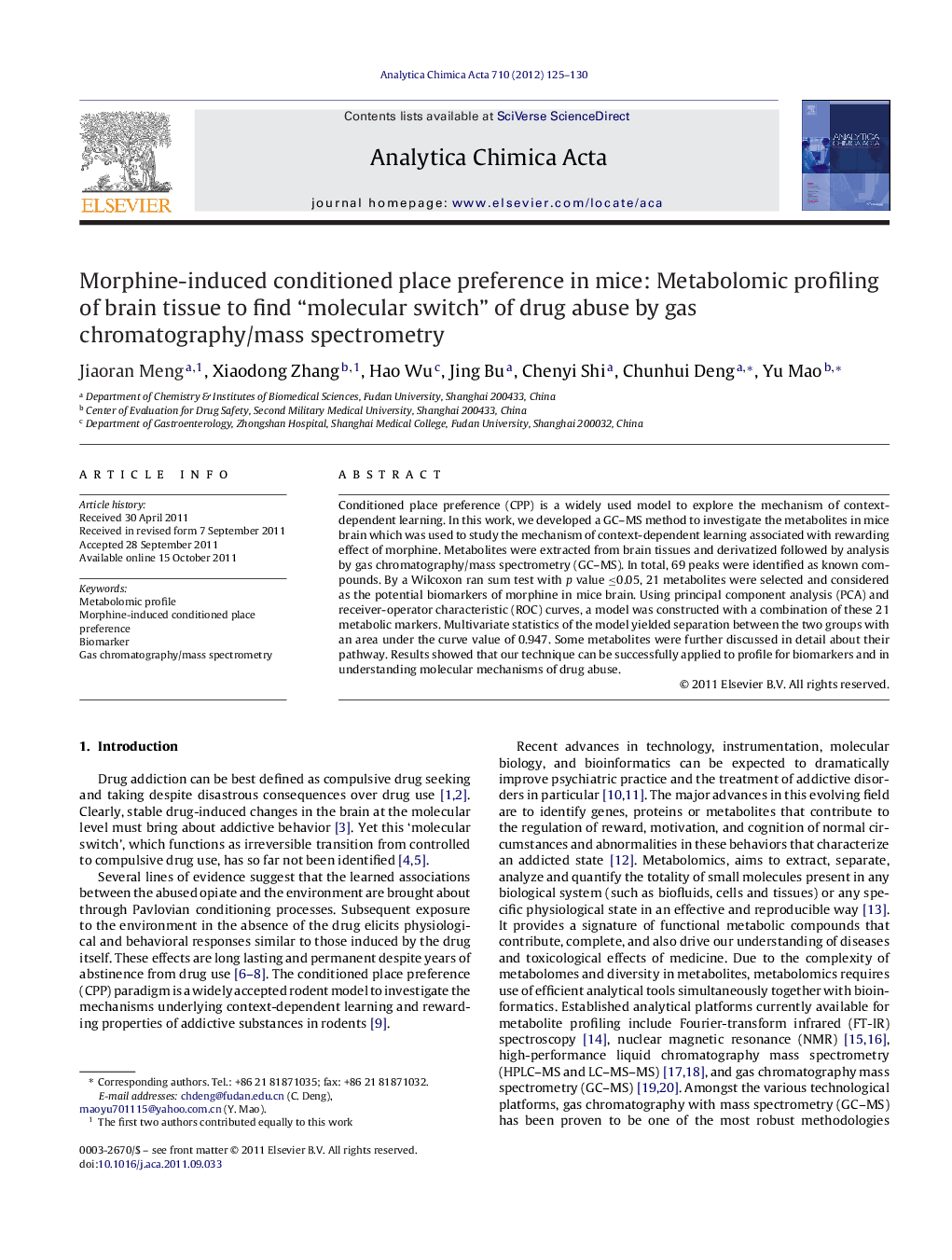| Article ID | Journal | Published Year | Pages | File Type |
|---|---|---|---|---|
| 1166600 | Analytica Chimica Acta | 2012 | 6 Pages |
Conditioned place preference (CPP) is a widely used model to explore the mechanism of context-dependent learning. In this work, we developed a GC–MS method to investigate the metabolites in mice brain which was used to study the mechanism of context-dependent learning associated with rewarding effect of morphine. Metabolites were extracted from brain tissues and derivatized followed by analysis by gas chromatography/mass spectrometry (GC–MS). In total, 69 peaks were identified as known compounds. By a Wilcoxon ran sum test with p value ≤0.05, 21 metabolites were selected and considered as the potential biomarkers of morphine in mice brain. Using principal component analysis (PCA) and receiver-operator characteristic (ROC) curves, a model was constructed with a combination of these 21 metabolic markers. Multivariate statistics of the model yielded separation between the two groups with an area under the curve value of 0.947. Some metabolites were further discussed in detail about their pathway. Results showed that our technique can be successfully applied to profile for biomarkers and in understanding molecular mechanisms of drug abuse.
Graphical abstractIn this study, morphine-induced conditioned place preference (CPP) in mice was used as an animal model to explore the mechanism of context-dependent learning associated with rewarding effect of morphine. We developed a GC–MS method to investigate the metabolic differences in mice brain tissues between morphine-treated (n = 20) and control groups (n = 19). Mice brain tissue metabolites were extracted and derivatized followed by analysis with GC–MS. 21 metabolic markers related to metabolic pathway of morphine in brain tissues were found.Figure optionsDownload full-size imageDownload as PowerPoint slideHighlights► We explored the mechanism of context-dependent learning associated with rewarding effect of morphine in mice brain. ► We examined metabolomic change in morphine-treated mice by GC/MS. ► Potential biomarkers relating to rewarding effect of morphine were selected. ► Myo-inositol, nicotinamide, proline and valine were likely to play a part in intracellular morphine-related signal pathway. ► We provided a new angle to look for the molecular mechanism of drug abuse.
